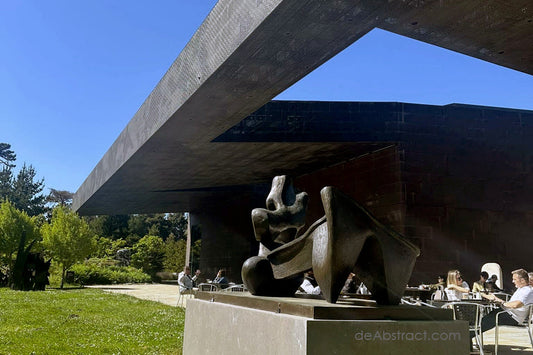
Art Smith, modernist mid-20th century jeweler, New York, Greenwich Village in the 1940s.
Art Smith was a groundbreaking Afro-Caribbean modernist jeweler in the mid-20th century. They used to tell him that jewelry was meant to be pretty, delicate, ladylike, and proper. But he never wanted to make something that sat still. He wanted movement.
He wanted rhythm. He wanted to make statements, not accessories.
Art Smith was born in Cuba in 1917 and raised in Brooklyn, a Black boy with an eye for beauty and a mind that never stopped shaping the air around me. Even when he was a kid, he could see forms in shadows and hear jazz in the shape of bent wire. His parents, Jamaican immigrants, believed in the importance of hard work and good manners. But he? He believed in art.


When he got into Cooper Union, he felt like he’d been handed the first tool in a lifetime’s toolkit. But it was when he studied under Winifred Mason, the first Black woman jeweler he’d ever met, that he felt permission to make his kind of mark. She taught him how to use a torch. She taught him about brass and copper and the dignity of working with your hands. She also taught him what it meant to be unapologetically yourself. And so he was. A Black man. A gay man. An artist. A modernist. A dreamer in metal.
Art Smith opened his shop in Greenwich Village in the 1940s, not far from where Billie Holiday might be singing in one club and James Baldwin might be scribbling in the corner of another. The world wasn’t always safe for someone like him. But the Village: oh, the Village was alive. Dancers, poets, radicals, lovers. His pieces belonged to them. They weren't dainty things. They curled and looped, hovered and pierced space. They asked you to move with them.



Some called his jewelry “too big” or “too strange.” Good. That meant he was doing something right. Jewelry, for him, had to be more than decoration to become part of the person wearing it. A sculpture in motion. A collaboration between body and object.
Over the years, his work found its way into museum collections and onto the necks and wrists of people who moved through the world like they meant it. That’s who he made it for. Not just the rich or the fashionable, but the fearless.
He wasn’t always understood. But he was seen, and that's all any artist wants. To be seen, to be heard, to leave a curve in time that says, “He was here. He felt something.”
And in the end, that’s what his jewelry is: his language, his rhythm, his revolution. Forged in flame, shaped by hand, worn with power.
 Art Smith, Necklace
Art Smith, Necklace
In the story of American modernism, the sculptor is often central—but Art Smith challenged that center, bringing sculpture off the pedestal and onto the body. His work didn’t just belong in a gallery; it moved with breath and rhythm, danced with the wearer, and defied the limits of jewelry as mere ornament. Smith’s designs from the 1940s through the 1970s represent a distinct art movement within jewelry, one rooted in abstraction, performance, and radical selfhood.
Modernism Worn: Form, Function, and Freedom
Emerging in post-WWII New York—a hotbed for Abstract Expressionism, jazz, and civil rights agitation—Smith’s jewelry echoed the ethos of Mid-Century Modernism: breaking from tradition, emphasizing expressive form, and blurring the lines between art and utility.
But while painters were exploding the canvas and architects were flattening façades, Smith was sculpting space around the body. Inspired by artists like Calder, Brancusi, and the improvisational brilliance of jazz, his works twisted and looped in organic gestures—kinetic, asymmetrical, and unapologetically bold.
Like modernist painters deconstructing perspective, Smith deconstructed symmetry and proportion in jewelry. His pieces—rings that spiraled beyond the finger, earrings that floated like mobiles, necklaces that rested like architectural scaffolding on the chest—were designed to be seen in motion, not isolation. Jewelry became performance.

Art Smith, Necklace
Radical Adornment: Identity and Resistance
Smith’s work must be read through more than formalism. As a Black, gay man in mid-century America, his very presence in the high-art world was a radical act. His jewelry can be seen as a movement of resistance, challenging narrow definitions of beauty, race, masculinity, and artistic value.
Smith’s studio in Greenwich Village was a hub for dancers, musicians, and bohemians. Many of his clients—Alvin Ailey dancers, jazz performers, Black creatives—inhabited liminal spaces in society. His jewelry responded by offering armor, elegance, and empowerment, shaped in brass and silver.
In this way, Smith’s oeuvre belongs not only to modernism but also to the Afro-Caribbean diaspora, queer liberation, and the politics of visibility. He helped usher in a movement of adornment as identity, years before the mainstream art world caught up.
Craft as Commentary
Trained under Winifred Mason, one of the first Black women jewelers in the U.S., Smith also helped expand the boundaries of the American Studio Craft Movement. He believed jewelry should be accessible and expressive, using affordable materials like brass or copper, not as a compromise but as a democratic statement.
His work fit neither into fine jewelry nor folk craft. Instead, it formed a third space: experimental, sculptural, wearable. He contributed to an emerging art movement that questioned who gets to make art, and for whom.

Art Smith, Bracelet
Legacy: A Movement Still Moving
Today, Art Smith’s influence is unmistakable in contemporary jewelry that blurs art and identity, gender and architecture, adornment and protest. His designs—once too “large,” too “strange,” too “Black”—now sit in major museums around the world.
But more than objects of beauty, they remain emblems of a movement:
One where the body becomes the gallery, identity becomes the message, and the curve of metal becomes the signature of freedom.

Art Smith, Necklace




